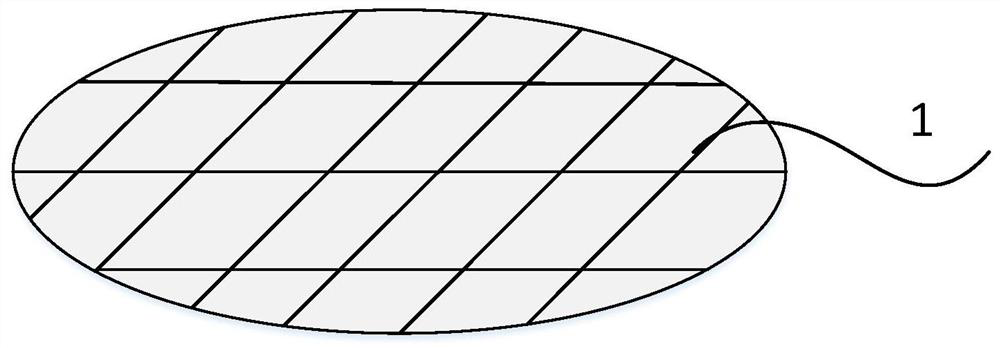A method to solve the problem that high light transmittance wafer cannot be identified in lithography alignment
A high transmittance, unidentifiable technology, applied in electrical components, circuits, semiconductor/solid-state device manufacturing, etc., can solve the problems of low cost, high transmittance wafers cannot be identified, etc. simple craftsmanship
- Summary
- Abstract
- Description
- Claims
- Application Information
AI Technical Summary
Problems solved by technology
Method used
Image
Examples
Embodiment 1
[0026] Step 1: If figure 1 As shown, before the photolithographic coating, low-cost processes such as sputtering, evaporation, physical vapor deposition or chemical vapor deposition are used to deposit carbon on the back of a high-transmittance wafer 1—such as a SiC wafer. A layer of low light transmittance film 2. The thickness of the carbon film is between 0.05 μm and 0.08 μm. The back side of the SiC wafer mentioned here specifically refers to the side that does not print graphics.
[0027] Step 2: Carry out conventional photolithography processes such as gluing, pre-baking, exposure, development, film hardening, corrosion, and degumming.
[0028] Step 3: After the entire photolithography process, use Descum O 2 removal of carbon film, such as figure 2 shown.
Embodiment 2
[0030] Step 1: Before photolithography coating, use low-cost processes such as sputtering, evaporation, physical vapor deposition or chemical vapor deposition to deposit TiW on the back of a high-transmittance wafer, such as a SiC wafer, to form a layer of low light transmittance film (2). The thickness of the TiW film is between 0.1 μm and 0.5 μm.
[0031] Step 2: Carry out conventional photolithography processes such as gluing, pre-baking, exposure, development, film hardening, corrosion, and degumming.
[0032] Step 3: After the entire photolithography process is completed, the TiW film is removed by soaking in SPM for 5-30 minutes.
PUM
| Property | Measurement | Unit |
|---|---|---|
| thickness | aaaaa | aaaaa |
| thickness | aaaaa | aaaaa |
Abstract
Description
Claims
Application Information
 Login to View More
Login to View More - R&D
- Intellectual Property
- Life Sciences
- Materials
- Tech Scout
- Unparalleled Data Quality
- Higher Quality Content
- 60% Fewer Hallucinations
Browse by: Latest US Patents, China's latest patents, Technical Efficacy Thesaurus, Application Domain, Technology Topic, Popular Technical Reports.
© 2025 PatSnap. All rights reserved.Legal|Privacy policy|Modern Slavery Act Transparency Statement|Sitemap|About US| Contact US: help@patsnap.com


